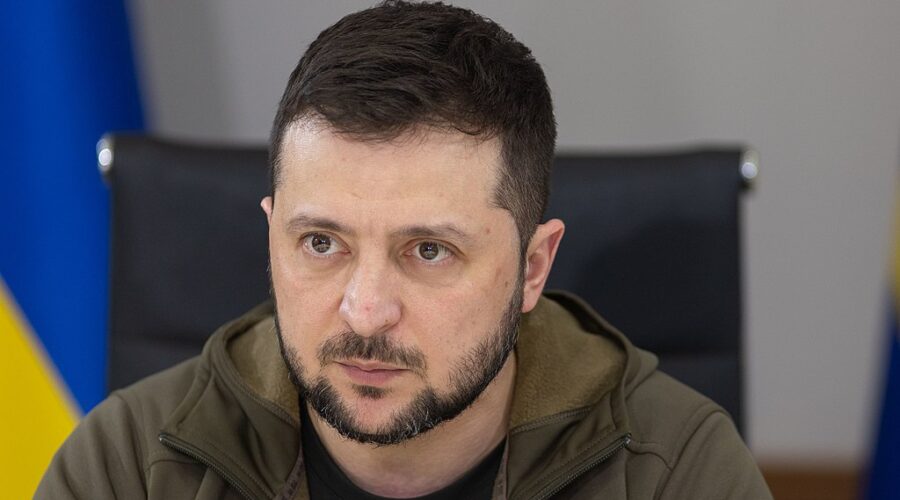More than two months after Ukraine launched a counteroffensive against Russian forces, the Eastern European nation’s military made rather small gains on the battlefield. In spite of that, the Ukrainian army continues storming well-fortified Russian positions hoping to make a breakthrough, at least in some sectors of the 600-mile front line.
But what will happen if Kyiv does not fulfil its ambitious goals in the next few months?
In November 2022, following a series of Russian debacles in southeastern Ukraine, retired US Army General Ben Hodges said that the Ukrainian Armed Forces could establish full control over the city of Melitopol in the Zaporizhzhia region, as well as over Mariupol in the Donbass, by January 2023.
Although that did not happen, in June 2023 Hodges stressed that Ukraine could recapture Crimea by the end of summer. Previously, in February 2023, Kirill Budanov, the head of foreign intelligence of Ukraine, pointed out that “the liberation of Crimea will take place in the summer of 2023”.
The summer in Ukraine is almost over, and its military is not even close to Crimea. At this point, recapturing Melitopol seems to be an unattainable goal. Even Ukrainian President Volodymyr Zelensky had to admit that the counteroffensive is “probably developing more slowly than some would like”. In early July, when it became obvious that the Russian forces are well-prepared, and determined to fight, he said that he told his Western partners that Ukraine wanted to start its counteroffensive “much earlier” to pre-empt Russian defenses. It is entirely possible that the West did not give him the green light to launch such an operation in the spring. As a result, Ukrainian forces are now suffering heavy losses, and making very little progress.
According to Ukrainian sources, at least ten thousand men must be conscripted into the military every month in order to maintain the number of Defense Forces at the existing level. Andriy Yusov, a representative of the Ukrainian Defense Ministry’s Main Intelligence Directorate, claims that the Russian Federation mobilizes about 20,000 people into military service every month. Thus, both sides undoubtedly have very high military casualties, and at this point neither Ukrainian nor Russian military seem capable of capturing any strategically important cities.
Reports, however, suggest that the Ukrainian forces could soon capture the village of Robotyne, which has tactical importance, given that it lies on the T0408 highway towards Tokmak – a city that does have strategic importance. But given the current tempo of its military operations, it might take a while before Ukrainian troops reach the outskirts of Tokmak.
The Russian military, on the other hand, is attempting to capture the city of Kupiansk in Ukraine’s Kharkiv region. Even though Ukrainian authorities have reportedly started evacuating the city, that does not necessarily mean that the Russians will seize it anytime soon. It is rather questionable whether Russia has enough manpower to launch any large-scale military operations. Ukraine seems to have a lack of troops too. Various experts believe that the Eastern European nation would need to mobilize at least three million people in order to defeat Russia. But that does not mean that Ukraine’s ability to fight has been “almost exhausted”, which is what Russian Defense Minister Sergey Shoigu claims. Kyiv, unlike Russia, has already declared a nationwide mobilization, which means that it will continue sending new troops to fight, although it might not be as easy as it was in the past.
Another problem for Ukraine is a lack of weapons, especially aircraft. One of the reasons its counteroffensive did not go “as some would like” is the fact that it never had air superiority. But since several NATO members have announced that they will soon begin providing Ukrainian military with the American-made F-16 fighter jets, Ukraine’s forces could eventually start making serious gains.
Therefore, even if the ongoing offensive does not end up in Kyiv’s favor, that does not mean that Ukraine will give up on its plans to recapture all the territories that are currently under Russian control. Although some political forces in the West are reportedly pressuring the Eastern European nation to cede parts of it territory to Russia to pave the way for its membership in NATO, it is not very probable that Kyiv, under the current circumstances, will even consider such an option. Instead, it will demand that the West continues providing it with weapons until Russia completely withdraws from Ukraine.
Given that the Ukrainian military is heavily dependent on foreign assistance, Kyiv is expected to continue fighting until the United States and its allies, for whatever reason, stop funding and arming Ukraine. In other words, only a potential Western “betrayal” of Ukraine could allow Russia to achieve some – not all – of its military and political goals.
For now, the Ukrainian forces will almost certainly continue conducting their counteroffensive, even though it is going very slowly, and the results are rather modest. But the fact that the West, at least for the time being, remains determined to keep arming Ukraine, suggests that a ceasefire agreement between Kyiv and Moscow is unlikely to be possible, regardless of the outcome of the Ukrainian military actions.
Image: President.gov.ua

